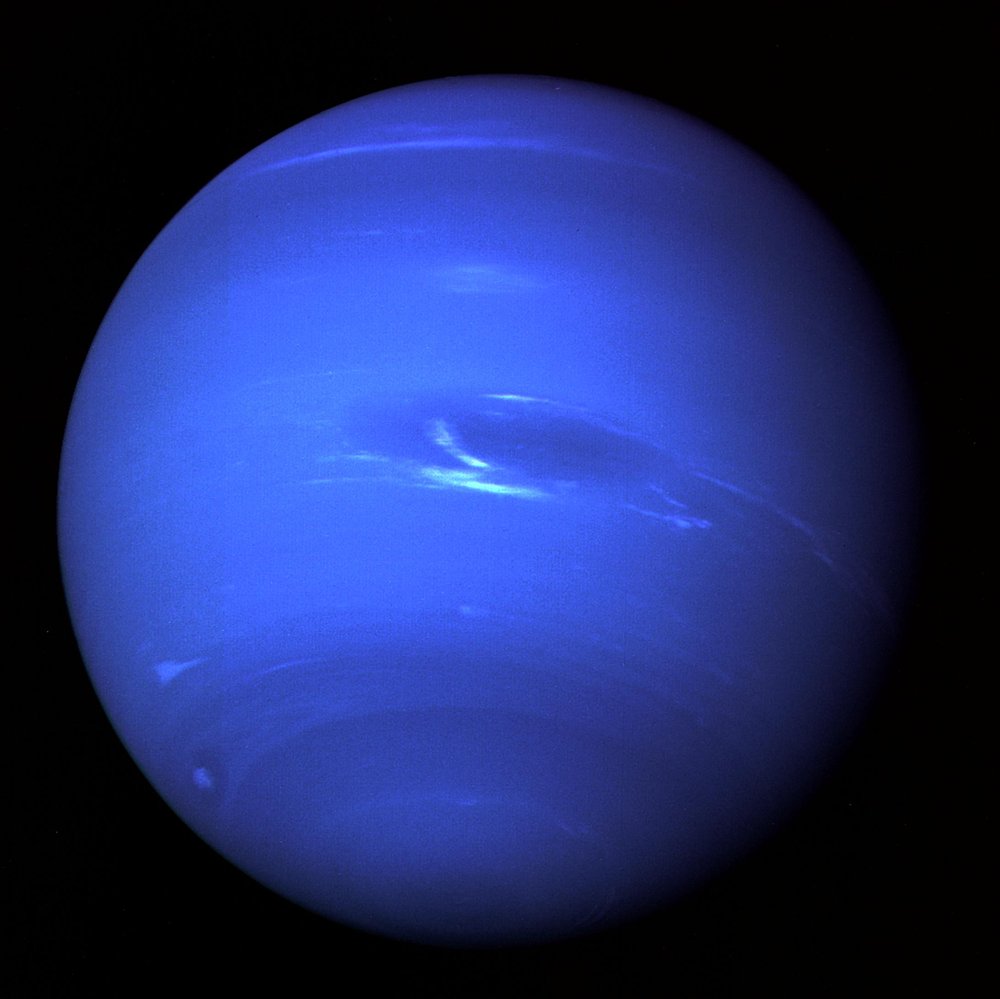

Finally, the last of the planets, we arrive at the planet named for the Roman god of the sea, Neptune. Orbiting at an average distance of 30 AU (30 times the Earth-Sun distance) it takes Neptune 165 years to complete a single orbit. Since its discovery in 1846, Neptune has only completed one full orbit around the sun, a feat it accomplished in 2011. Of the eight planets, Neptune is the only one you cannot observe with the naked eye, its discovery is certainly an interesting tale.
Firstly, it is important to note that we have only discovered three planets in our solar system (Uranus, Neptune, and Pluto – which was later reclassified), the five classical planets and Earth have been known since the dawn of human civilization. Most people believe Neptune was first discovered by Johann Galle in 1846, which is technically correct. But Mr. Galle is not the first person to observe the ice giant. That honor goes to Galileo.
After the advent of the Telescope, Galileo looked at the sky and was immediately captivated with Jupiter. In his observations, Galileo almost became the first person in human history to discover a new planet. On December 28th, 1612, he recorded Neptune as a star. In later observations of the Jovian system, Galileo noted that the 8th magnitude ‘star’, which was really Neptune, had appeared to move position –but for some reason, Galileo did not investigate further, and Neptune’s true nature remained hidden. Several other astronomers also recorded Neptune as a star, over the next few centuries.
Finally, 234 years after Galileo, Neptune was to be officially recognized, but not in the ‘normal’ way. Of the then seven known planets, Uranus and Mercury were the only two who’s orbits Newton’s laws of gravity didn’t perfectly explain. Urbain Le Verrier and John Adams started to separately work on the Uranus problem. Eventually, after a dizzying amount of calculating, they came to the conclusion that the perturbations of Uranus’s orbit were caused by another planet further out in the solar system.
They predicted the position of Neptune, and in 1846, Neptune became the first planet discovered by mathematics – Easily one of the greatest accomplishments of classical mathematics.
Neptune remained a bit of a mystery for the next century until Voyager 2 was launched in 1973. Voyager 2 is the only mission to visit the distant planet, and it certainly shed some light on our outermost planet. Voyager 2 discovered six new moons (Neptune currently has 14 known moons), storm systems (specifically the Great Dark Spot), and Neptunian auroras, among others.
Neptune is home to Triton, the largest moon in the solar system which has a retrograde orbit. This leads astronomers to believe Neptune probably captured Triton as it was passing by. A very dark, very faint planetary ring system also surrounds the planet.
The massive planet also has a profound impact in the orbits of objects found in the Kuiper belt, causing the various Trans-Neptunian Objects to orbit in different resonances with itself.
There are still many unanswered questions about our deep blue friend, but, you know how science goes. We send missions, answer questions, and in the process, we usually find more questions.
~Joshua
Sources and further reading:
Mathematical discovery of planets
Image Credit: NASA